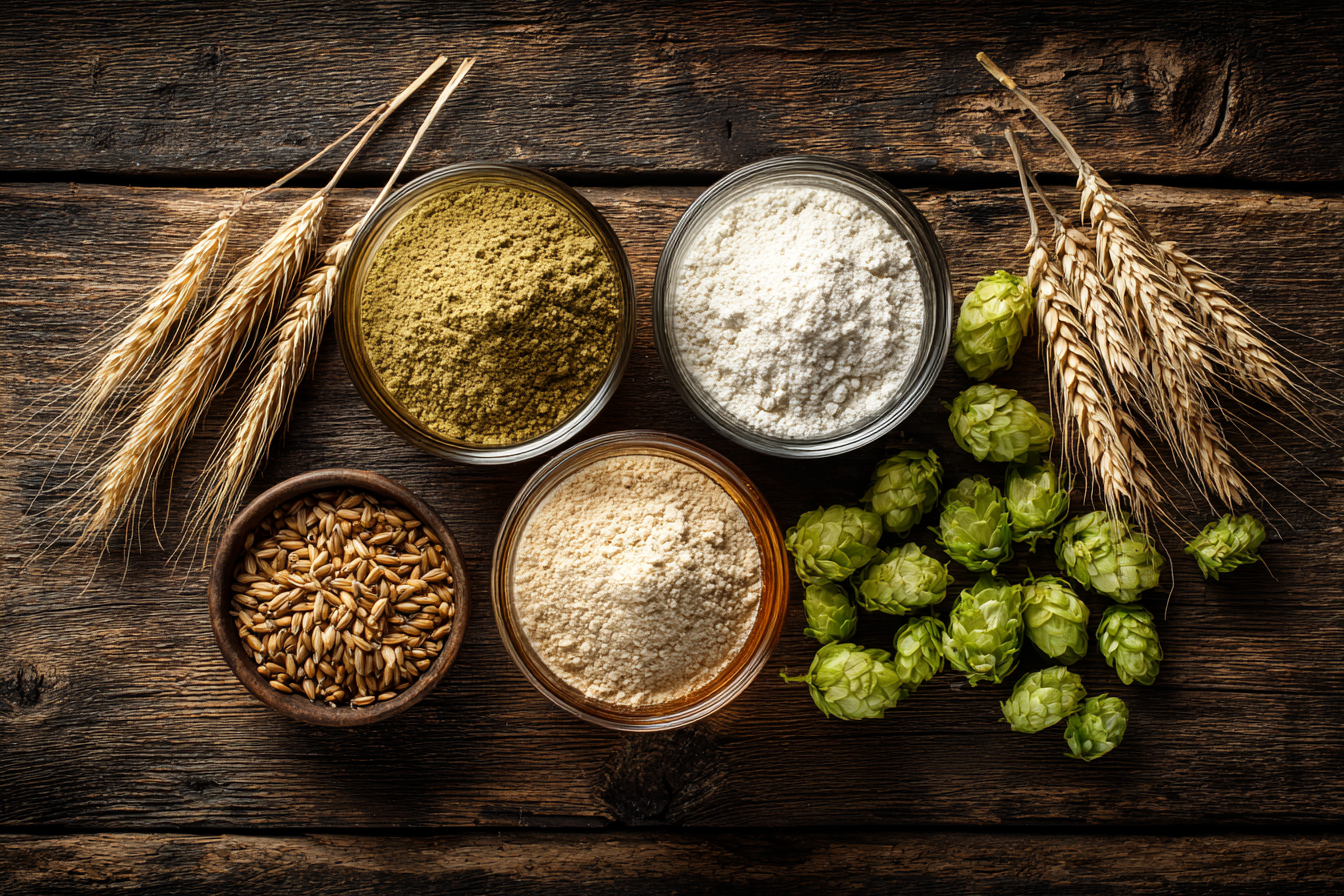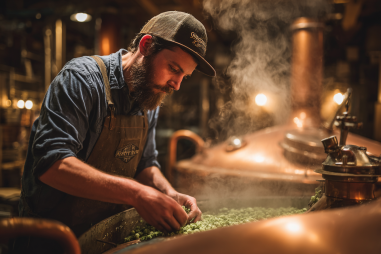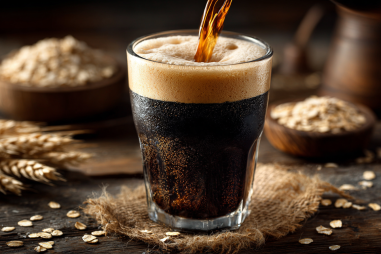American Light Lager is a beloved beer style known for its crisp, refreshing character and clean finish. These qualities don’t come about by accident—instead, they are the result of carefully chosen brewing ingredients that work harmoniously to create a light, easy-drinking lager. If you’ve ever wondered what specific malts, hops, yeast strains, and water profiles contribute to this style, you’re in the right place. Let’s explore the essential brewing ingredients that define American Light Lager and how they contribute to its unique flavor profile.
The Malt Varieties Used in American Light Lager
Malt forms the backbone of any beer, providing the fermentable sugars that yeast will convert into alcohol while also imparting flavor, color, and body. In American Light Lager, malt selection is crucial to achieving a light yet balanced taste and pale color.
The primary malt used is typically a high-quality 2-row pale malt, prized for its relatively neutral malt character and good enzymatic power. It delivers enough fermentable sugars without overwhelming the palate with strong malt flavors. Some brewers may blend in smaller amounts of pilsner malt to enhance the delicate maltiness and add a subtle sweetness.
To achieve the light body and color that define American Light Lager, adjunct grains such as corn or rice are often incorporated. These adjuncts are utilized because they provide fermentable sugars that lighten the beer’s body and color without introducing strong flavors. Corn and rice adjuncts also help reduce the maltiness, contributing to a crisper, cleaner flavor profile. This practice originated in the United States to create an approachable, easy-drinking beer.
The Role of Hops and Hop Types
Hops are integral to balancing the sweetness of malt with bitterness, as well as adding subtle aroma and flavor. For American Light Lager, the hop profile is typically mild and restrained to maintain the beer’s light character.
American Light Lagers often use noble-style or American hop varieties known for their clean, crisp bitterness and mild aromatic qualities. Popular hops include:
- Saaz: A traditional noble hop known for its delicate earthy and herbal aroma.
- Hallertau: Provides a mild, slightly spicy aroma that complements the light malt base.
- Progress: A German hop that imparts subtle bitterness with mild floral notes.
- American hops like Cascade or Centennial: Sometimes used in small amounts for a light citrusy or floral touch.
The bitterness level in American Light Lager is generally low to moderate, enough to balance malt sweetness without bitterness dominating the flavor. This balance helps ensure the beer remains crisp, clean, and refreshing.
Yeast Strains and Fermentation Characteristics
The yeast strain used in American Light Lager plays a pivotal role in creating its signature clean finish and light body. Lager yeast, specifically Saccharomyces pastorianus, is a bottom-fermenting yeast that ferments at cooler temperatures (typically between 45-55°F or 7-13°C). This slower fermentation produces fewer esters and phenols, which keeps the flavor profile clean and neutral.
Using a pure, high-quality lager yeast strain ensures that the fermentation is consistent and produces a crisp, refreshing beer without unwanted off-flavors. Additionally, the yeast’s attenuation (ability to consume sugars) tends to be high, which reduces residual sweetness and lightens body to match the style’s characteristics.
Some brewers may employ a diacetyl rest phase near the end of fermentation, warming the beer slightly to allow the yeast to clean up buttery off-flavors (diacetyl), further enhancing the crisp profile.
Water Chemistry and Its Effect on Taste
Water makes up the majority of beer, so its chemical makeup significantly impacts the final product. In American Light Lager production, water is generally treated or selected to have a soft, balanced profile to emphasize smoothness and drinkability.
Characteristics of ideal water for American Light Lager include:
- Low mineral content, particularly low sulfate and chloride levels
- Neutral to slightly alkaline pH (around 7 to 8)
- Minimal hardness (calcium and magnesium)
Water with these properties helps keep bitterness gentle and supports the delicate malt character without adding harshness or metallic off-flavors. Some breweries even adjust water chemistry to remove excessive minerals (using reverse osmosis or ion exchange) or add small amounts of minerals like calcium to promote enzyme activity and protein coagulation during brewing.
Ingredient Sourcing and Quality Considerations
Quality and consistency in ingredient sourcing are essential to brewing a successful American Light Lager. Due to the beer’s light and subtle flavor profile, any variations in ingredient quality can be more noticeable.
When selecting malts, brewers look for grains with consistent protein and moisture levels to ensure clean fermentation and color control. Adjunct grains like corn or rice are often sourced as flaked or extruded versions, which are easy to gelatinize and convert during mashing.
Hop selection focuses on freshness and low alpha acids if a low bitterness level is desired. The hops should be stored properly—usually frozen in vacuum-sealed packages—to maintain their aroma and bitterness potentials.
The yeast culture must be healthy, pure, and well-maintained through proper propagation and storage to avoid infection or off-flavors.
Water quality regularly undergoes testing and adjustments to keep parameters consistent, which allows brewers to replicate the beer’s taste batch after batch.
Impact of Ingredient Choices on Final Beer Quality
The synergy of ingredients ultimately shapes the character and drinkability of American Light Lager. For example:
- Malt and adjuncts: Too much malt or darker malts will lead to a heavier, busier flavor that contradicts the light lager style. The right malt/adjunct ratio guarantees a pale color and crisp palate.
- Hops: Overly aggressive hopping would mask the delicate malt profile and confuse the drinker. Subtle hop bitterness maintains balance without distracting aromas.
- Yeast: A clean-fermenting lager yeast prevents fruity esters or sulfur notes that could disrupt the smoothness crucial to American Light Lager.
- Water: Proper water chemistry enhances malt sweetness and hop bitterness so both feel natural and pleasing, not sharp or dull.
In essence, every ingredient must be chosen and managed with care. A flaw in one can affect the entire profile, but when all elements work together, the result is a beer that is refreshingly crisp, mildly flavorful, and extremely drinkable.
The Harmonious Blend of Ingredients in American Light Lager
At its core, the allure of American Light Lager lies in ingredient synergy. The careful balance of mild malts with adjuncts, restrained hop bitterness, clean fermenting yeast, and soft water creates a delightful beverage that satisfies brewery novices and seasoned beer drinkers alike.
Whether you’re a homebrewer eager to replicate this classic or a curious enthusiast wanting to understand what goes into your favorite brew, knowing the essentials behind American Light Lager’s ingredients deepens your appreciation. This beer style’s simple yet precise recipe highlights how thoughtful brewing choices can yield a timeless, refreshing, and perfectly crafted light lager.







